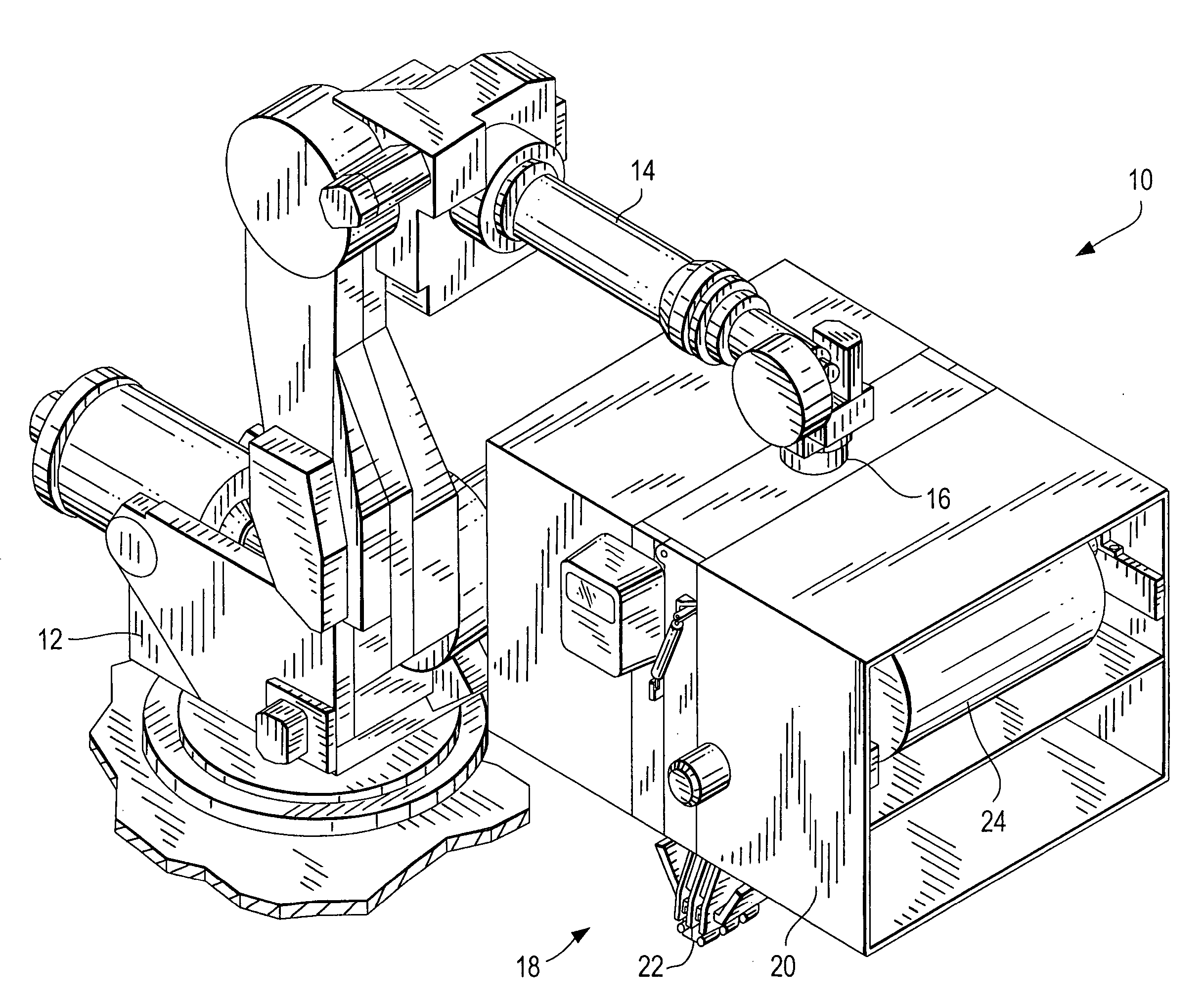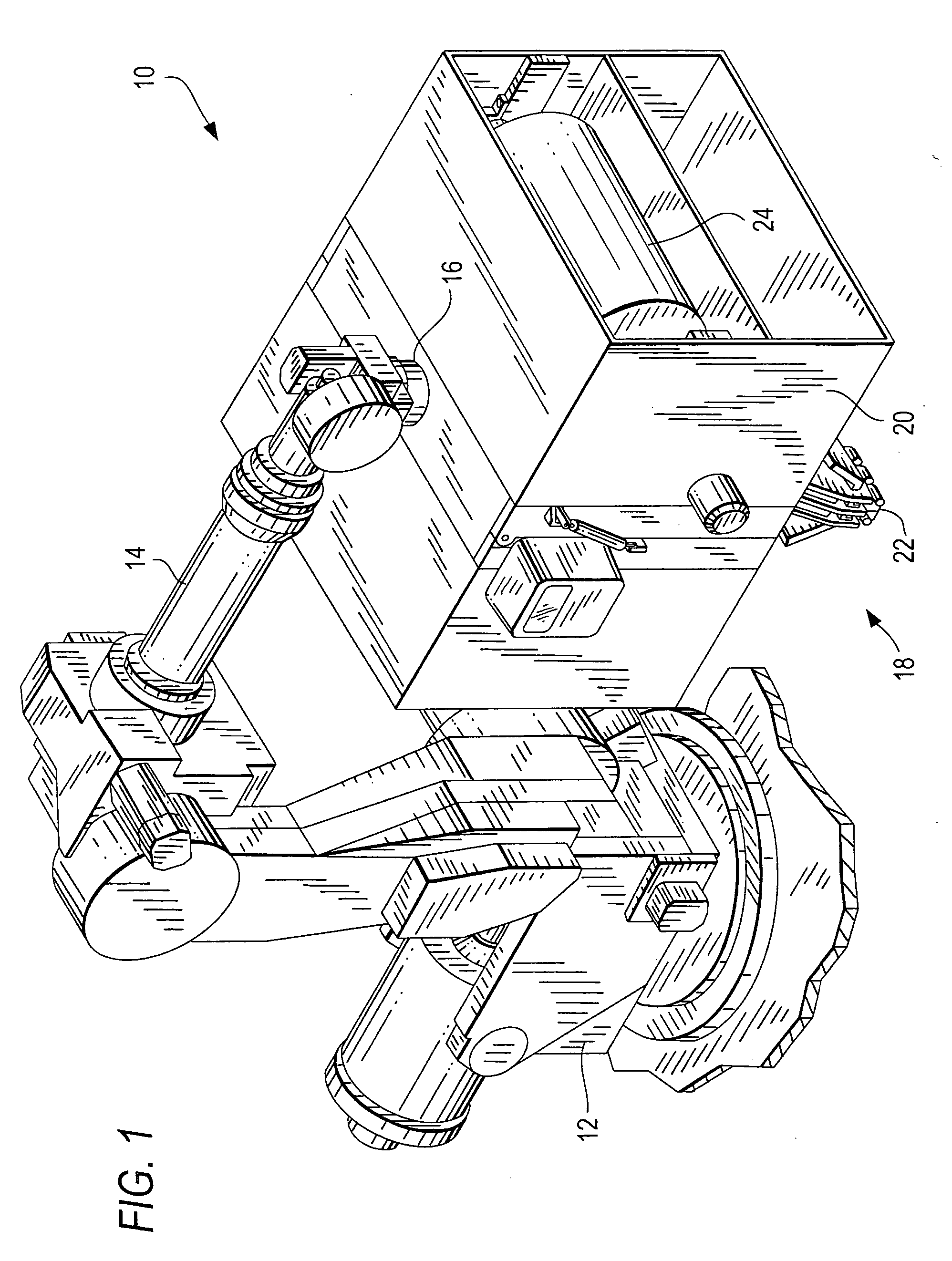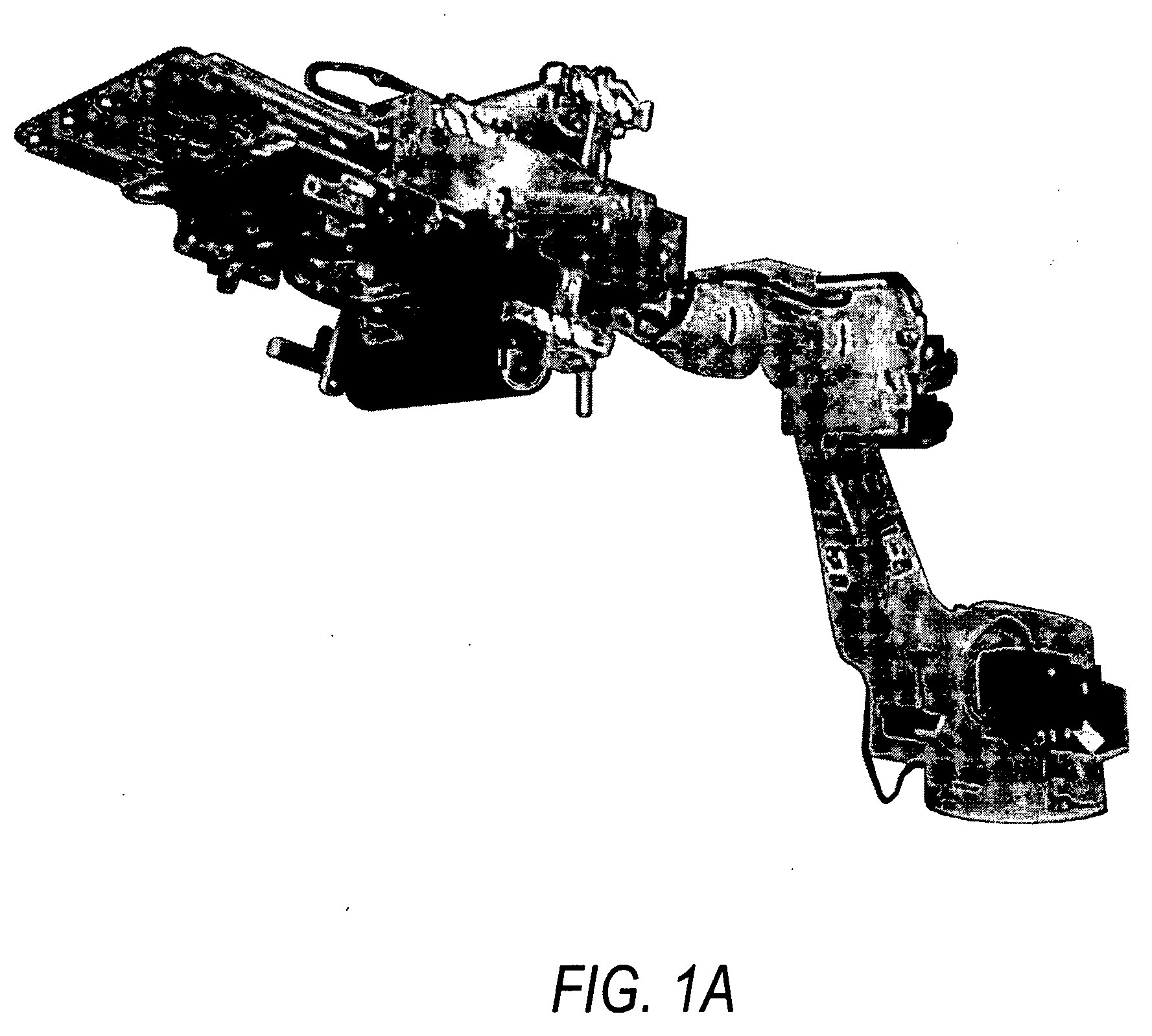Precision feed end-effector composite fabric tape-laying apparatus and method
a technology of composite fabric and end-effector, which is applied in the direction of electrical programme control, mechanical control devices, programme control, etc., can solve the problems of increased weight of the final product, limited ability of the result to be an engineered product, and process tends to be very messy, and achieves simple configuration
- Summary
- Abstract
- Description
- Claims
- Application Information
AI Technical Summary
Benefits of technology
Problems solved by technology
Method used
Image
Examples
Embodiment Construction
[0110] This invention is illustrated herein in the form of a first embodiment, shown primarily in FIGS. 1-18, where the PFE tape-laying head has four basic modules or module units, each having three rollers, and a second embodiment where the PFE has three basic modules. While both of these embodiments are shown with two side-by-side sets of basic modules where the tape is fed between them, the preferred embodiments of this invention comprise a variation of said first and second embodiments where one of said two side-by-side sets of basic modules is replaced by a guide plate as seen in FIG. 30. Thus, it should be understood that the descriptions of the first and second embodiments are intended to include this third embodiment variation. For convenience, some of the components in the second embodiment which are essentially the same as components in the first embodiment will be given the same reference number. As will be explained later, in both the first and second embodiments the rol...
PUM
| Property | Measurement | Unit |
|---|---|---|
| Length | aaaaa | aaaaa |
| Length | aaaaa | aaaaa |
| Angle | aaaaa | aaaaa |
Abstract
Description
Claims
Application Information
 Login to View More
Login to View More - R&D
- Intellectual Property
- Life Sciences
- Materials
- Tech Scout
- Unparalleled Data Quality
- Higher Quality Content
- 60% Fewer Hallucinations
Browse by: Latest US Patents, China's latest patents, Technical Efficacy Thesaurus, Application Domain, Technology Topic, Popular Technical Reports.
© 2025 PatSnap. All rights reserved.Legal|Privacy policy|Modern Slavery Act Transparency Statement|Sitemap|About US| Contact US: help@patsnap.com



